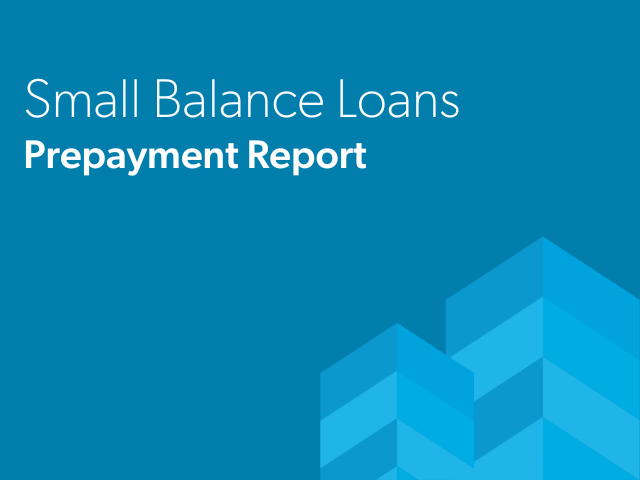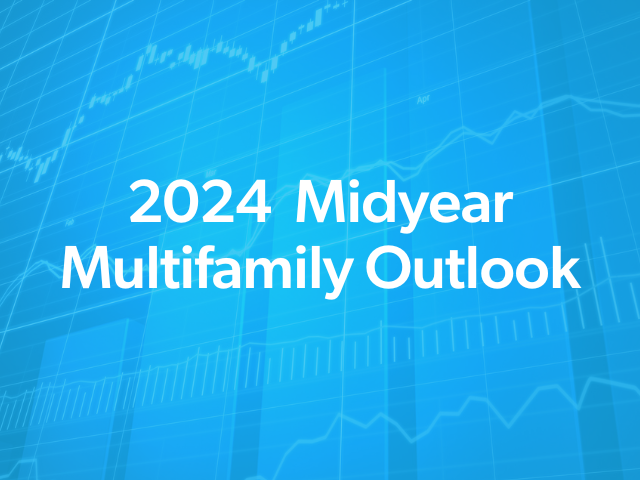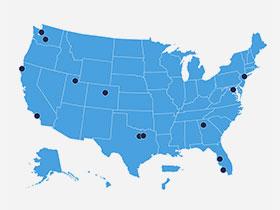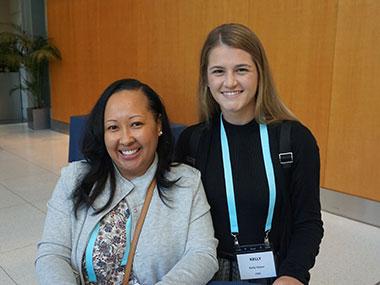When-Issued Certificates — the Future of our Business
When-Issued (WI) certificates are bonds that offer investors a funded method to purchase certain K-Deal® certificates in advance of the K-Deal settlement, all while earning a guaranteed current coupon. Freddie Mac Multifamily first brought this structure to market in September 2021 for our A-M class bonds, and by year-end, we had settled nearly $2 billion through the WI execution path. In January 2022, we began adapting this concept for our A-2 class bonds. As of June 2022, we’ve used the WI program on a total of 21 deals representing $11.3 billion sold through the program.
Since the program’s launch, we’ve continued to see strong investor engagement with both the A-M and A-2 bond classes on each WI offering. Looking ahead, this funded-forward structure is expected to be the predominant way for an investor to acquire new-issue A-2 and A-M guaranteed classes for our 7- and 10-year fixed-rate K-Deals. Our next WI offering will be our tenth deal to feature both A-2 and A-M bond classes.
Now that we’re about 10 months into the WI program, we would like to take this opportunity to revisit some of the questions we have received around the mechanics and rationale for its creation, as well as touch on the future of the program. To help shed some light on these topics, we’d like to share the perspectives from two of our WI subject matter experts: Ling Xu, vice president of our Multifamily Investments & Portfolio Management Team, and Jason Griest, vice president of Multifamily Securitization. Both were instrumental in the creation and ongoing execution of our WI program, and we’re excited to pull back the curtain and share their behind-the-scenes perspectives.

Perspective from Ling Xu
Vice President, Multifamily Investments & Portfolio Management
Ling, can you share details on why the WI product was developed?
The Freddie Mac Multifamily K-Deal model requires us to aggregate loans on our balance sheet and then issue pooled transactions. Although we hedge the interest rate risks, the aggregation period does subject Freddie Mac to market spread risk, because some of those hedging tools are imperfect. In other words, in the traditional K-Deal model, if bond spreads widen or tighten before the loans are turned into issued securities, we will be subject to the market volatility. To help minimize this spread risk volatility, the WI product effectively shrinks the time we are subject to the market volatility by pre-selling some of a future K-Deal’s securities up to 90 days early. The WI program better aligns our loan production with the pricing of our security offerings. This concept is the first of its kind in the market and differs from the forward settle model (such as Single Family TBA or Fannie Mae DUS) through the funded form. It further reduces future rate uncertainty and therefore is both an effective spread and rate-hedging tool.
What are the WI program benefits for the investor?
Investors gain more certainty to invest today’s cash at a fair yield level. Instead of a guesstimate amount of cash to be invested at a future yield level in a TBA model, investors are able to receive a fully guaranteed current coupon on certificates, which results in additional yield or “carry” for up to 90 days. The WI securities are also tradeable through a Depository Trust Company (DTC), and we have established a process for potential Community Reinvestment Act (CRA) allocations for investors seeking CRA credit.
Are there expectations to move this execution path to other deals?
We are currently issuing all 7- and 10-year fixed-rate benchmark K-Deals (A-2 and A-M classes) through our WI platform. There is a possibility of utilizing the WI execution path for the A-1 class as well, but for now we’ll continue to syndicate the A-1 through our typical process. At this time, we do not expect to move any other product types through the WI execution path.

Perspective from Jason Griest
Vice President, Multifamily Securitization
Jason, what questions are you hearing the most from investors?
There are three questions I am frequently hearing from investors.
- “Is this a forward trade?”
No, this is not a forward trade, but rather a funded investment. Once the WI securities are priced, we settle the WI Deal about a week later, and guaranteed coupon payments will start the following month, just like any standard K-Deal.
- “Is it difficult to convert WI certificates into K certificates?”
First, I do want to highlight that the conversion is not necessary, and it is entirely up to each WI investor if they want to exercise this option. Investors will receive the same exact coupon on the WI bonds as they will for the K-Deal bonds whether they convert or not. For those who do want to convert, the feedback we’ve received is that the conversion is seamless. An investor will coordinate with an approved broker/dealer to set up the WI-to-K conversion. Today, we’re usually able to settle any conversion on a T+2 business days timeline. We’ve seen most of the 2021 vintage WI securities fully converted to their K-Deal equivalents and the vast majority of 2022 issuance have converted as well.
- Should we be concerned about WI certificates’ liquidity compared with our regular K-Deals?
There is currently a ‘new product’ concession for WI bonds versus new issue K-Deal bonds, and we believe investors are being fairly compensated for any perceived, short-term liquidity issues. We expect this concession to diminish as the program continues to mature and investors gain internal approval for purchase.
For 7- and 10-year fixed-rate transactions, an investor currently cannot buy any syndicated, new-issue A-2 or A-M bonds, therefore liquidity for the WI bonds is expected to grow with each new issuance. If an investor is still concerned about liquidity, they can convert their WI bonds to true K-Deal certificates as soon as the corresponding deal is issued and closed.
What is the investor composition compared with other K-Deals?
The investor composition is basically the same. Early in the WI program, money manager participation accounted for a sizable amount of the order book because the spread concession to standard K-Deals was more pronounced. Now that the program is more mature and investors have had time to gain internal approvals to purchase, we’ve seen greater participation from banks and insurance companies. We continue to add additional crossover investors and first-time participants to each new WI Deal.
To learn more about our WI program, check out these additional resources or contact a member of our team.
NAIC Interpretation of Accounting
Have questions? Reach out to the Investor Relations mailbox.
This article is intended to describe the WI K-Deal® program in general, not a specific transaction. All statements are preliminary and are subject to change. Before investing in a particular security, each investor should carefully read all the offering documents and should only make an investment decision after reading the applicable offering documents.














